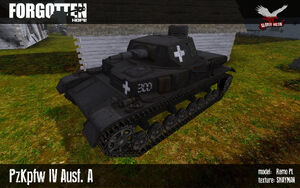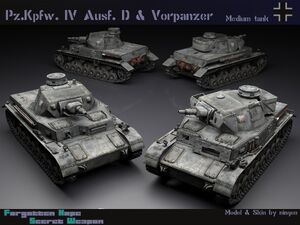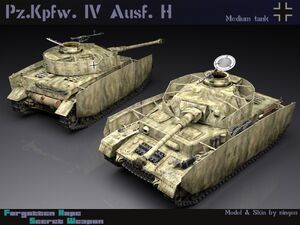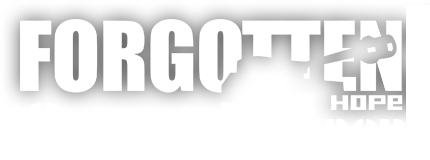No edit summary Tag: Source edit |
No edit summary Tag: Source edit |
||
| Line 25: | Line 25: | ||
|Category = Medium tank |
|Category = Medium tank |
||
|Used by = Germany |
|Used by = Germany |
||
| − | |Speed = |
+ | |Speed = 32.4 km/h |
|Crew in-game = 2 |
|Crew in-game = 2 |
||
|Main armament = 7.5 cm KwK 37 L/24<br>122 shells |
|Main armament = 7.5 cm KwK 37 L/24<br>122 shells |
||
| Line 37: | Line 37: | ||
|Produced In = October 1937 - 1938 |
|Produced In = October 1937 - 1938 |
||
|Armour = 15mm}} |
|Armour = 15mm}} |
||
| − | 35 of the Ausf. A were produced. The cupola design and its wider superstructure distinguishes it from later versions. It's more of a infantry support vehicle like the [[Sturmgeschütz III]] which would see its first service in the French campaign. Ausf. A didn't have much armour for direct engagement against armoured vehicles. |
+ | 35 of the Ausf. A were produced. The cupola design and its wider superstructure distinguishes it from later versions. It's more of a infantry support vehicle like the [[Sturmgeschütz III]] which would see its first service in the French campaign. Ausf. A didn't have much armour for direct engagement against armoured vehicles. The engine of the Ausf. A & B, the Maybach HL 108TR has 20% less horsepower than later versions of the tank. |
<br style="clear:both"/> |
<br style="clear:both"/> |
||
Revision as of 07:23, 20 April 2021
The Panzerkampfwagen IV (Pz.Kpfw. IV) commonly known as the Panzer IV was a medium tank developed in Nazi Germany in the late 1930s and used extensively during the Second World War. Its ordnance inventory designation was Sd.Kfz. 161.
Designed as an infantry-support tank, the Panzer IV was not originally intended to engage enemy armor—that function was performed by the lighter Panzer III. However, with the flaws of pre-war doctrine becoming apparent and in the face of Soviet T-34 tanks, the Panzer IV soon assumed the tank-fighting role of its increasingly obsolete cousin. The most widely manufactured and deployed German tank of the Second World War, the Panzer IV was used as the base for many other fighting vehicles, including the Sturmgeschütz IV assault gun, Jagdpanzer IV tank destroyer, the Wirbelwind self-propelled anti-aircraft weapon, and the Brummbär self-propelled gun. And also a non-standard variant the Munitionspanzer IV which acts as an transport, ammo supply or can tow certain guns.
Robust and reliable, it saw service in all combat theaters involving Germany and has the distinction of being the only German tank to remain in continuous production throughout the war, with over 8,800 produced between 1936 and 1945. Upgrades and design modifications, often made in response to the appearance of new Allied tanks, extended its service life. Generally these involved increasing the Panzer IV's armor protection or upgrading its weapons, although during the last months of the war with Germany's pressing need for rapid replacement of losses, design changes also included retrograde measures to simplify and speed manufacture.
| Ausf. F1 | Ausf. F2 | Ausf. H | Ausf. J | Ausf.H mit 7,5 cm Rfk. 43 & 3cm MK 103 |
|---|
Ausf. A
| Pzkpfw IV Ausf. A Sd.Kfz. 161 | |
|---|---|

| |
| General Historical Information | |
| Place of origin | Germany |
| Manufacturer | Krupp-Gruson |
| Produced In | October 1937 - 1938 |
| Category | Medium tank |
| Debut in FHSW | Battle of Ilza |
| Speed | 32.4 km/h |
| Armour | 15mm |
| Main armament | 7.5 cm KwK 37 L/24 122 shells |
| Coaxial weapon | 7.92 mm MG 34 22 x 75 rounds |
| General Ingame Information | |
| Used by | Germany |
| Crew in‑game | 2 |
| Seat 2 | 7.92 mm MG 34 22 x 75 rounds |
| Seat 3 | Passenger Seat |
| Seat 4 | Passenger Seat |
| Historical Picture | |
| File:PanzerIVAusfA.jpg | |
35 of the Ausf. A were produced. The cupola design and its wider superstructure distinguishes it from later versions. It's more of a infantry support vehicle like the Sturmgeschütz III which would see its first service in the French campaign. Ausf. A didn't have much armour for direct engagement against armoured vehicles. The engine of the Ausf. A & B, the Maybach HL 108TR has 20% less horsepower than later versions of the tank.
Ausf. D
| Pzkpfw IV Ausf. A Sd.Kfz. 161 | |
|---|---|

| |
| General Historical Information | |
| Place of origin | Germany |
| Manufacturer | Krupp-Gruson |
| Produced In | October 1939 - May 1941 |
| Category | Medium tank |
| Debut in FHSW | Debut in FH |
| Speed | 42 km/h |
| Armour | File:PzIVCarmour.jpg |
| Main armament | 7.5 cm KwK 37 L/24 122 shells |
| Coaxial weapon | 7.92 mm MG 34 17 x 150 rounds |
| General Ingame Information | |
| Used by | Germany |
| Crew in‑game | 2 |
| Seat 2 | 7.92 mm MG 34 8 x 250 rounds |
| Seat 3 | Passenger Seat |
| Seat 4 | Passenger Seat |
| Historical Picture | |

| |
After assembling 40 Ausf. Cs, the engine was replaced with the improved HL 120TRM. The last of the 140 Ausf. Cs was produced in August 1939, and production changed to the Ausf. D. This version, of which 248 vehicles were produced, reintroduced the hull machine gun and changed the turret's internal gun mantlet to an external one. The protection was upgraded by increasing side armor to 20 mm.
In response to the difficulty of penetrating British Matilda Infantry tanks during the Battle of France, the Germans had tested a 50 mm gun—based on the 5 cm Pak 38 L/60 anti-tank gun on a Panzer IV Ausf. D. However, with the rapid German victory in France, the original order of 80 tanks was canceled before they entered production.
Ausf. F1
In April 1941 production of the Panzer IV Ausf. F started. It featured 50 mm single-plate armor on the turret and hull, as opposed to the appliqué armor added to the Ausf. E, and a further increase in side armor to 30 mm. The weight of the vehicle was now 22.3 tonnes, which required a corresponding modification of track width from 380 to 400 mm to reduce ground pressure. The wider tracks also facilitated the fitting of ice sprags, and the rear idler wheel and front sprocket were modified. The designation Ausf. F was changed in the meantime to Ausf.F1, after the distinct new model, the Ausf. F2, appeared. A total of 464 Ausf. F (later F1) tanks were produced from April 1941 to March 1942, of which 25 were converted to the F2 on the production line.
Later in the war they may come with HEAT rounds. The HL/C is quite effective but the Klw (Klappleitwerk) is even more so. This HEAT-FS is stablilized by fins which increases it's accuracy.
Ausf. F1 Pillbox
Quite uncommon turret bunker. Though quite obsolete in 1945 it may have HEAT-FS then which increases it's effectiveness with a penetration of 160mm.
Ausf. F2
| Pzkpfw IV Ausf. F2 Sd.Kfz. 161/1 | |
|---|---|

| |
| General Historical Information | |
| Place of origin | Germany |
| Manufacturer | Krupp-Gruson Vomag Nibelungenwerke A.G. |
| Produced In | March 1942 - May 1942 |
| Category | Medium tank |
| Debut in FHSW | Debut in FH |
| Speed | 40 km/h |
| Armour | 
|
| Main armament | 7.5 cm KwK 40 L/43 87 shells |
| Coaxial weapon | 7.92 mm MG 34 17 x 150 rounds |
| General Ingame Information | |
| Used by | Germany Hungary Italy |
| Crew in‑game | 4 |
| Seat 2 | Commander Seat |
| Seat 3 | 7.92 mm MG 34 8 x 250 rounds |
| Seat 4 | Passenger Seat |
| Seat 5 | Passenger Seat |
| Historical Picture | |

| |
On May 26, 1941, mere weeks before Operation Barbarossa, during a conference with Hitler, it was decided to improve the Panzer IV's main armament. Krupp was awarded the contract to integrate again the same 50 mm Pak 38 L/60 gun into the turret. The first prototype was to be delivered by November 15, 1941. Within months, the shock of encountering the Soviet T-34 medium and KV-1 heavy tanks necessitated a new, much more powerful tank gun. In November 1941, the decision to up-gun the Panzer IV to the 50mm gun was dropped, and instead Krupp was contracted in a joint development to modify Rheinmetall's pending 75 mm anti-tank gun design, the 75 mm Pak 40. Because the recoil length was too long for the tank's turret, the recoil mechanism and chamber were shortened. This resulted in the75 mm KwK 40 L/43 and it was the only Panzer IV with this gun with the ball shaped muzzle break. When firing an armor-piercing shot, the gun's muzzle velocity was increased from 430 m/s to 990 m/s. Initially, the gun was mounted with a single-chamber, ball-shaped muzzle brake, which provided just under 50% of the recoil system's braking ability. Firing the Panzergranate 39, the KwK 40 L/43 could penetrate 77 mm (3.03 in) of steel armor at a range of 1,830 m (6,000 ft). The Ausf. F2 is the only version using the ball-shaped muzzle brake! The tank increased in weight to 23.6 tonnes. One 175 Ausf. F2s were produced from March 1942 to July 1942. Three months after beginning production, the Panzer IV Ausf. F2 was renamed Ausf. G.
Ausf. H
| Pzkpfw Ausf. H Sd.Kfz. 161/2 | |
|---|---|

| |
| General Historical Information | |
| Place of origin | Germany |
| Designer | Krupp |
| Manufacturer | Krupp-Gruson Vomag Nibelungenwerke |
| Produced In | April 1943 - July 1944 |
| Category | Medium tank |
| Debut in FHSW | Debut in FH (Without Night Vision) 0.51 (With Night Vision) |
| Speed | 38 km/h |
| Armour | 
|
| Main armament | 7.5 cm KwK 40 L/48 (87 rounds) |
| Coaxial weapon | 7.92 mm MG 34 (150 rounds) |
| General Ingame Information | |
| Used by | Germany |
| Crew in‑game | 3 |
| Special abilities | Night Vision available |
| Seat 2 | 7.92 mm MG 34 (250 rounds) |
| Seat 3 | 7.92 mm MG 34 (250 rounds) |
| Seat 4 | Passenger Seat |
| Seat 5 | Passenger Seat |
| Historical Picture | |

| |
The next version, the Ausf. H, began production in April 1943 and received the designation Sd. Kfz. 161/2. This variant saw the integrity of the glacis armor improved by manufacturing it as a single 80-millimetre plate. To prevent adhesion of magnetic anti-tank mines, which the Germans feared would be used in large numbers by the Allies, Zimmerit paste was added to all the vertical surfaces of the tank's armor. The vehicle's side and turret were further protected by the addition of 5 mm side-skirts and 8 mm turret skirts. During the Ausf. H's production run its rubber-tired return rollers were replaced with cast steel; the hull was fitted with triangular supports for the easily-damaged side-skirts. A hole in the roof, designed for the Nahverteidigungswaffe, was plugged by a circular armored plate due to shortages of this weapon. These modifications meant that the tank's weight jumped to 25 tonnes, reducing its speed, a situation not improved by the decision to adopt the Panzer III's six-speed SSG 77 transmission, which was inferior to that of earlier-model Panzer IVs.
Ausf. J
| Pzkpfw IV Ausf. J Sd.Kfz. 161/2 | |
|---|---|

| |
| General Historical Information | |
| Place of origin | Germany |
| Manufacturer | Nibelungenwerke Vomag |
| Produced In | June 1944 - March 1945 |
| Category | Medium tank |
| Debut in FHSW | v0.42 |
| Speed | 38 km/h |
| Main armament | 7.5 cm KwK 40 L/48 (48 rounds) |
| Coaxial weapon | 7.92 mm MG 34 (150 rounds) |
| General Ingame Information | |
| Used by | Germany |
| Crew in‑game | 4 |
| Ammunition | Panzergranate 40 APCR |
| Special abilities | Night Vision available |
| Seat 2 | 7.92 mm MG 34 (250 rounds) |
| Seat 3 | 7.92 mm MG 42 {50 rounds) |
| Seat 4 | Nahverteidigungswaffe 10 x HE grenade |
| Seat 5 | Passenger Seat |
| Seat 6 | Passenger Seat |
| Historical Picture | |

| |
Despite addressing the mobility problems introduced by the previous model, the final production version of the Panzer IV - the Ausf. J — was considered a retrograde from the Ausf. H. Born of German necessity to replace heavy losses, the Ausf H was simplified to speed the production. It was the same Ausf H fuselage but with less details and parts. The electric turret drive with auxiliary generator set was remove from the design and later, since July 1944, replace by a extra 200 litre fuel tank wich increased the fuel capacity to 680 litres. By removing the electric turret drive, the crew needs to travers the turret by hand wich slows down the turret speed. However, the fuels tanks give mechanical problems so they need to be fixed and that happens in September 1944 with new fuel tanks. As the production continued, more modifications were made including. Such luke deleting of the turret visor and pistol ports, installation of Pilze 2-ton crane mount sockets, introduction of Flammentoeter mufflers, conversion from plate Schürzen to Thoma type wire-mesh, reduction to 3 return rollers per side, installation of Naehverteidigungswaffe close defence system and ceasing application of Zimmerit paste. In addition to new modifications, numerous changes made to Ausf G and H were also applied to Ausf J. Unfortunately this was not applied to the model in FHSW! Only the Schürzen are been replaced, the pistol ports are been removed, upgraded with rge Flammentoeter mufflers, the machinegun on the top of the roof is a MG 42 and not a MG 34 and the Nahverteidigungswaffe have been built in the turret.
Ausf. J "Nelonen"
Only 15 were delivered to Finland before the treaty was signed ending the war against the USSR, which also meant turning on the Germans and having to drive them out of their country. This abrupt end to cooperation meant not just that all 40 that in total were requested never delivered. But also a lack of instructors, meaning they had to figure out how operate these tanks on their own. Although some already had much experience with StuG 3 which helped. "Nelonen" means "four" and was a common nickname for the tank. These tanks were too late for the continuation war but saw minor action against the German forces left in the country during the Lapland war.
In FHSW it is present on the map "Battle of East Karelia".
External links
| |||||||||||||||||||||||||||||
| ||||||||||||||||||||||||||||||||||||||
| |||||||||||||||||
| |||||

























